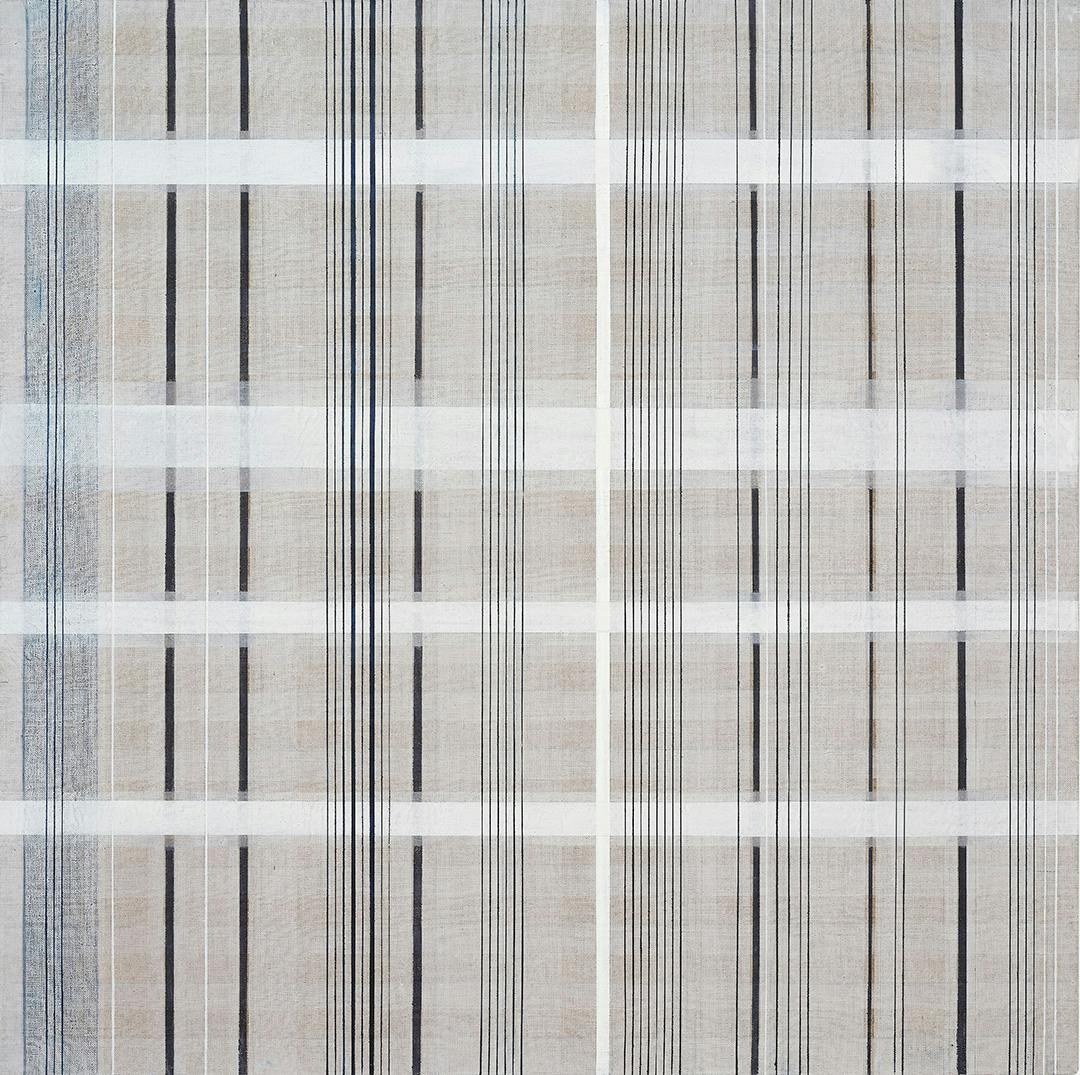
Iron, Flax, Coal, and Chalk: New Works @ National Gallery of Iceland
Sýningartexti / Exhibition Text
English below
Í miðpunkti innsetningarinnar eru nokkrir járnskúlptúrar með hillum og sýningarkössum sem innihalda bæði fundna og manngerða hluti. Þetta safn jarðneskra hluta hefur margslungið yfirborð sem kallar á snertingu; þarna eru uppþornaðar leifar eftir matargerð og lífræn efni á borð við plöntuleifar, pappír, bein og dún, en einnig postulín, járn, kopar og steinn. Í þessu persónulega safni sést hvaða áhrif umbreyting hversdagslegra hluta hefur á næmi listakonunnar og hvernig hún bregst við þeim í listsköpun sinni.
Himnur er einnar rásar vídeóupptaka af þunnum magavefjum sauðkindarinnar sem safnað er saman eftir sláturgerð. Himnurnar hringsnúast í eldhúsvaski fullum af vatni. Matargerðarhefðir sem þessi finnast í mörgum menningarheimum og spretta fyrst og fremst af nauðsyn og þeirri ákvörðun að láta ekkert fara til spillis. Vinna með slátur er á vissan hátt skúlptúrgerð, þar sem ný lífræn form verða til úr öðrum slíkum.
Þóra hefur haft áhuga á alls kyns strúktúrum síðan í æsku, þar á meðal fínlegum teikningum byggingaruppdrátta, tímatöflum í almanökum og dagatölum, og línum til að skrifa á og nótnastrengjum fyrir tónsmíðar. Þegar hún var ung stúlka teiknaði hún grófa arkitektateikningu af æskuheimili sínu og bætti inn á hana línum sem sýndu hreyfingar fjölskyldumeðlimanna út og inn og á milli herbergja. Ein af elstu minningum hennar er um röntgenmyndir af mannslíkamanum, sem faðir hennar, röntgenlæknir á Akureyri, tók. Þóra hreifst af tengingunum á milli beinagrindar mannsins og holdsins og kerfa líkamans, af opnu sambandi mannslíkamans við umhverfi sitt, og þeirri hugmynd að allt tengist í gegnum efnið.
Meðal verka á sýningunni eru kopar- og álætingar sem unnar voru í listamannadvöl í Berlín og Feneyjum og á prentverkstæði félagsins Íslensk Grafík í Hafnarhúsinu. Listamaðurinn vinnur með einn prentlit og byggir með honum upp áhugavert jafnvægi með því að draga fram óendanlega fín blæbrigði í línum og litatónum. Röð málverka, sem unnin eru með viðarkolum, grafíti, bleki, blýanti og krít á límgrunnaðan hör, sýnir aðra hlið á athugunum listamannsins á samspili þeirra takmarkana sem fylgja neti lóðréttra og láréttra lína og tilviljanakenndrar uppröðunar.
English:
This exhibition brings together recent drawings, prints, paintings, and assemblages that follow on artist Þóra Sigurðardóttir’s decades-long preoccupation with the grid as an elemental structure against which drawings and objects are placed, creating tension between rectilinear order and organic form. At the center of the installation are several architectonic iron structures with shelves and vitrines containing both found and handmade objects. A tactile sensuality pervades this artist’s collection of commonplace things and natural materials, such as flax fibers, clay, feathers, and bone.
The video Himnur / Membrane reflects Þóra’s interest in the body’s inner membranes. The single-channel work features the delicate translucent tissue of sheep stomachs collected after making blood sausage, the casings swirling within a water-filled kitchen sink. Such food making traditions in Iceland exist across other cultures as well, arising, fundamentally, out of necessity and economy, and the impulse not to let anything go to waste. In its way, it is a kind of sculptural process whereby new organic forms are composed from dismembered parts.
Structures have interested Þóra since childhood, including building plans, calendars, ruled writing paper, and staves for music composition. A drawing she made as a young girl shows an architectural plan of the family home onto which she added lines tracing its inhabitants’ movements from inside and outside and room to room. One of her earliest memories is of X-rays of the human body taken by her father, a renowned radiologist in Akureyri in the north, where the family lived. She was fascinated by the interconnectedness of the human skeletal armature and the flesh and physiological systems of the body, as well as its porous relationship to its external environment, and the notion that everything is connected across the common denominator of matter.
Among the works included in the exhibition are several series of copper and aluminum plate etchings executed at artist residencies in Berlin and Venice and in the Icelandic Printmakers Association print workshop at Hafnarhúsið. Working with monochromatic inks, the artist masterfully achieves infinite subtle variations in the etched lines, tonal scale, and compositional balance of each unique work. A series of paintings made by the direct application of egg tempera, charcoal, graphite, ink, pencil, and chalk on glue-sized linen offers insight into another aspect of the artist’s exploration of the interplay between the woven textile grid and the intricate layering of materials on the surface.
Pari Stave
